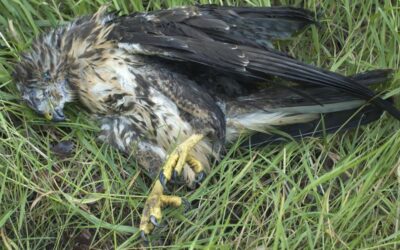Can you hear the pitter-patter of tiny footsteps behind the skirting? Does Tom keep bringing Jerry in from the garden?
Mice are a part of British wildlife – but when they take up residence with you, they can be a cause for concern.
Active all year round, mice are one of the most common pest species in the UK.
Whether you’re thinking about doing some DIY pest control or you’re looking to enlist the help of a professional pest management company, this guide is for you.
Mice are small mammals of the order Rodentia.
Although commonly identified as pests, some are bred and kept as pets.
Globally there are hundreds of types of mouse, including varieties such as the deer mouse (Peromyscus), house mouse (Mus musculus domesticus), wood/field mouse (Apodemus sylvaticus), Edible dormouse (Glis glis), spiny mouse (Acomys) and even the striped zebra mouse (Lemniscomys).
In this guide
- The dangers: why we control mice
- Types of mice in the UK
- Habitat: how mice choose a home
- Where do mice come from?
- The tell-tale signs mice are about
- Why are mice more common in winter?
- Appearance
- Mouse, rat, shrew or vole?
- Mouse biology and behaviour
- What do mice eat?
- How can I stop my cat bringing home mice?
- How to treat a mouse bite
- How to prevent mice
- Getting rid of mice
- Finding a pest controller to get rid of mice
The dangers: why we control mice
Although mice are often considered to be cute by some people, they are a public health pest and can cause serious harm.
Mice have been known to spread nasty diseases – such as Salmonella and Listeria – to humans through their urine, droppings and bedding.
Mice have a need to mark their territory with their urine and due to their sporadic eating habits, build nests near food sources. This puts anyone with an infestation at risk of food poisoning.
As they scurry around, they carry dirt and bacteria with them, transferring it to your counter tops, cabinets, pantry and anywhere else they travel.
These nibbling nuisances can also cause a lot of property damage, due to their compulsive need to gnaw to maintain their teeth at a constant length.
Electric cables, water and gas pipes, packaging and woodwork may all be seriously damaged by mice – many instances of electrical fires and floods have been attributed to them.
Mice around businesses
Property and land owners have a legal obligation under the Prevention of Damage by Pests Act 1949 to keep premises rodent free, or, if rodents pose a threat to health or property, to report infestations to the local authority.
Owners of food businesses also have obligations to keep premises pest free under the Food Safety Act 1990.
Environmental Health Officers or General Enforcement Officers can issue enforcement notices to business owners who don’t have adequate pest management procedures in place.
If not complied with, these can lead to fines or even a stint in jail and a criminal record.
And if a company or organisation has a highly publicised mouse problem, then it will heavily impact its reputation.
If clients and customers spot evidence of rodent infestation in the premises you manage, they are unlikely to want to do business with you.
And several widely shared social media posts can help spread a negative image.
Types of mice in the UK
In regards to pest management, there are two common types of mouse in the UK to be aware of:
- House mouse (Mus musculus domesticus)
- Field mouse or wood mouse (Apodemus sylvaticus).
If you come into contact with a mouse, chances are it’s a house mouse. Three guesses why?
These mice are known as “commensal rodents”, which refers to them living with or in close proximity to humans.
Commensalism is defined as a long-term interaction in which members of one species (ie mice) gain benefits, while those of the other species (ie humans) neither benefit or are harmed.
Field mice are much more suited to nesting outdoors, but will possibly move indoors once the weather gets colder.
Habitat: how mice choose a home
House mice are found in and around human structures as they rely on warmth and shelter for nesting sites, and our readily available food sources.
 Mice live in nests that they build out of materials like cloth, wool and paper. Image: Rentokil
Mice live in nests that they build out of materials like cloth, wool and paper. Image: RentokilNests are often built in places such as roof spaces, under floors or in wall cavities, sheds, basements, storage boxes and wherever there is access to a good source of food and safe, warm harbourage to breed.
Outdoors, field mice will excavate burrows in which to build nests of dry grass, but they will also den among rocks and crevices.
Their main priority will be building a nesting site that isn’t accessible to predators, including cats, foxes, birds and even other rodents, like rats.
Where do mice come from?
Mice are naturally inquisitive and can squeeze through cracks as small as 5mm, to search for food and shelter.
If a neighbouring property has an infestation, this can spread very quickly into your home or business.
They can also come into your property by climbing vines or trellis against the walls of your building.
If you have a lot of vegetation and foliage nearby this is perfect for mice to shelter in, until the time comes for them to find somewhere warmer.
The tell-tale signs mice are about
Their presence is usually detected from one of the following signs:
- Mice droppings – these are often black, and about the size and shape of a grain of rice. Fresh droppings will be soft and moist. Each mouse can leave approximately 80 droppings per day. Common places to find mouse droppings are under the kitchen sink, around central heating boilers and in roof spaces
- Strong ammonia smell – mice urinate frequently
- Smear marks – these are dark grey marks left on surfaces by repeated contact with the oils in mouse fur
- Nests – sometimes nests can be found indoors for example in lofts, under floorboards or in airing cupboards
- Damage to stored food in cupboards and pantries
- Gnaw marks on materials such as wood, carpets, paper, pipe cables and furniture.
Why are mice more common in winter?
Mice do not hibernate and are a problem all year round.
House mice are already living in and around wherever we are.
But as the weather gets colder, those field mice currently surviving outdoors will look for warmer places to nest and begin to move indoors.
They are highly adaptable and won’t hesitate to take advantage of a cosy human structure during the winter months.
Food is also an issue – they begin to scavenge closer to humans, as their own sources are no longer plentiful.

Appearance
House mice
The house mouse has a typical mouse profile: small feet with big eyes and thinly-haired ears, and a pointed snout with thin whiskers.
Their body length ranges between 60-90mm, and the tail generally equals the length of its body, adding another 90mm.
They weigh less than 25g, and their fur colour is uniformly light brown and grey, right down to the tail which has sparse hairs on it.
And keep those pegs handy – they have a really distinctive, strong smell so you’ll know if you have a large infestation of these unwanted guests.

Field mice
A field mouse has sandy brown fur with a lighter underside.
As it mainly lives outdoors, it has bigger eyes and ears than a house mouse. This is an adaptation to avoid predation.
Field mice also have long tails, making them quite agile climbers.
Juveniles are greyer overall, still with larger ears, hind feet and tails than house mice.
Mouse, rat, shrew or vole?
There are a few animals which look very similar to a mouse and can often be mistakenly identified as such.
The three which a mouse can commonly be mistaken for are; rats, shrews and voles.

A large mouse can look like a young rat to the untrained eye, and vice versa.
However an adult brown rat can weigh-in at over half a kilo and measure about 23cm, without counting the tail: much bigger than an adult mouse.
A rat has a blunt muzzle, small hair-covered ears and a tail shorter than its body.
In contrast to the characteristics of a mouse, voles have smaller ears, eyes and tails, with a rounded snout.
Similarly, shrews also have small eyes, short tails and small ears. However they have a very distinctive, pointed snout.
Shrews are not rodents, unlike the other three.

It is important to understand these distinctions, as water voles and all species of shrew are protected under the Wildlife and Countryside Act 1981.
It is also important to know whether you are dealing with a mouse or a rat, as the behaviour of these two species differs and this will affect any control efforts.
Mouse biology and behaviour
Mating and lifespan
Mice have a very easy-to-remember rule around breeding cycles: 21 days.

Each part of the cycle takes 21 days on average.
When a female mouse is impregnated, the gestation period lasts for around 21 days.
Mice are mammals and so they give birth to live young. On average this is between five and seven pups, but can be anywhere up to 12.
It then takes 21 days to wean those pups, who will then reach full maturity in another 21-38 days.
During this time the female mouse will go through what is known as a fertile postpartum estrus, which occurs 14 to 24 hours following the birth.
This means that a mouse can become pregnant almost immediately after giving birth, which is one of the reasons that a mouse infestation can grow quickly out of control.
A female mouse can produce anywhere between 5 and 10 litters a year.
Most mice have quite short life expectancy in the wild, around 9 to 12 months.
Other characteristics
Mice are actually colourblind, however their other senses make up for it.
They have an acute sense of hearing, frequently using ultrasound to communicate, and are especially sensitive to any sudden noise.
According to research, mice are even thought to serenade each other with love songs.
In terms of movement, they will use their whiskers to sense the texture of surfaces and changes in temperature.

Mice are nocturnal and can often be heard running about in the night as they search for food.
Nervously active, they are agile climbers and impressive jumpers, as well as being good swimmers.
They can run along ropes, cables and wires, even climbing up rough, vertical surfaces.
Did you know: mice have very flexible ribs, which allow them to squeeze through any gap into which they can fit their head.
Mice are territorial animals, marking their area with urine and checking their terrority to make sure nothing has changed.
They are also very fast runners, holding their tails straight up for balance as they scarper.
What do mice eat?
Mice are erratic, sporadic feeders, nibbling at many sources of food rather than taking repeated meals from any one item.
They can make as many as 30 trips a night to different food sources, taking tiny amounts from each.
This can make them more difficult to control with toxic baits than a rat, which will happily gorge on one food source.
Their favourite foods are cereal products, although as omnivores they will eat almost anything.
They do not need free water to drink as they generally obtain sufficient moisture from their food.
How can I stop my cat bringing home mice?

It’s not pleasant when your cat brings home small animals, but it’s a common part of being a cat owner.
Unfortunately there’s not much you can do to prevent it. Cats are born hunters and, even when well fed, will continue to exhibit this natural behaviour.
There are a couple of things you can try, which may help:
- Keep your cat indoors – there are benefits to having a house cat, one of which is that they won’t be bringing home unwanted visitors
- Don’t overfeed your cat – this will not prevent them from hunting, it will only stop them from eating what they kill
- Buy a collar with a bell – cats are silent hunters, so take away that advantage
- Play more! One of the reasons cats hunt is for stimulation, so buy more toys and spend more time playing with them.
How to treat a mouse bite
As with most animals, mice will bite if they feel threatened or are disturbed, although it is VERY rare.
If you have been bitten by a mouse, immediately wash the wound as thoroughly as possible; mouse bites are not often deep, but it’s important to do this even if the skin hasn’t been broken.
Once the area is cleaned, treat it with antiseptic cream and seek medical advice.
How to prevent mice
Prevention is better than cure, so let’s take a look at how we can accomplish that.
Mice only need a gap of 5mm to gain entry (roughly the diameter of the eraser end of a pencil).
You will need to search for any potential entry points and seal these up with wire wool embedded in quick-setting cement.
 Image: Rentokil
Image: RentokilYou should focus on low level gaps first as these are the most likely areas for mice to enter. You can then consider any higher up vents or gaps.
Check around pipes and windows, and double check the basement.
You should focus on low level gaps first as these are the most likely areas for mice to enter.
Proofing all means of entry as much as possible will help to prevent an infestation.
Other steps you should take are:
- Remove potential nesting sites by keeping gardens clean and tidy, cutting back overgrown areas and clearing any piles of wood/debris
- Cover any household waste where mice can get access to it, close dustbin lids and cover compost heaps
- Store food in airtight containers and make sure any food debris is cleaned up straight away
- Install door sweeps or door brush strip on exterior doors, if the gap is larger than 4mm.
Good hygiene practices won’t eliminate a mouse problem, but poor practices will attract them.
Getting rid of mice
DIY mouse control
It is important to get rid of mice quickly, as mice are adaptable, highly mobile and breed rapidly – this combination can make mouse control a difficult task for the untrained individual.
For any mouse infestation, we would always recommend contacting a professional pest control company through BPCA.
They are trained in mouse control and will have access to a range of professional use rodenticides which are not available to the public.
If you decide to carry out the work yourself, then you can buy amateur use poisons and traps from a hardware store or garden centre. It is crucial that you read the label fully before use.
However, due to their habits, traditional baiting techniques and trapping frequently do not work, and a combination of rodenticides may be necessary.
It is common knowledge in the pest control industry that almost all house mouse populations in London (and possibly other cities) are resistant to traditional rodenticides.
Ammature use products are restricted and it is likely that you won’t be able to purchase the necessary poison.
An alternative to using poisons are break-back traps.
You may catch mice if baited with nutty chocolate, raisins or similar attractive food and placed close to signs of mouse activity.

Place traps close to, and at right angles to, walls so the treadle may be activated from either direction.
When placing poison or traps, make sure they are in a safe and secure place out of reach of children and pets.
WARNING: When using rodenticides always follow the instructions on the label, and importantly search for and dispose of any dead rodents in a safe manner.
Leaving these in the open can result in primary and secondary poisoning of non target animals, such as birds scavenging on the carcass.
Additionally, thought needs to be taken when placing poison or traps to ensure they are in a safe and secure place out of reach of non target animals, children and pets.
Although it is not recommended to tackle these pests yourself, if you decide to give it a go then you must take all necessary precautions to ensure you do not cause collateral damage or suffer personal injury.
Professional pest control
For any mouse infestation, we would always recommend contacting a professional pest control company.
They are trained in mouse control and will have access to a range of professional use rodenticides which are not available to the public.
Knowing how much, where, and when to deploy products is where professionals are able to take control of situations efficiently.
Professional pest controllers will take an integrated pest management (IPM) approach to tackling your infestation.
A pest professional will have access to monitoring equipment, which they will use to confirm entry points into your property, the size of the infestation and to track the mouse to its harbourage (nest).
They can then recommend a proofing strategy and decide on the best course of action in terms of control; this could be traps, rodenticides or a combination of both.




0 Comments